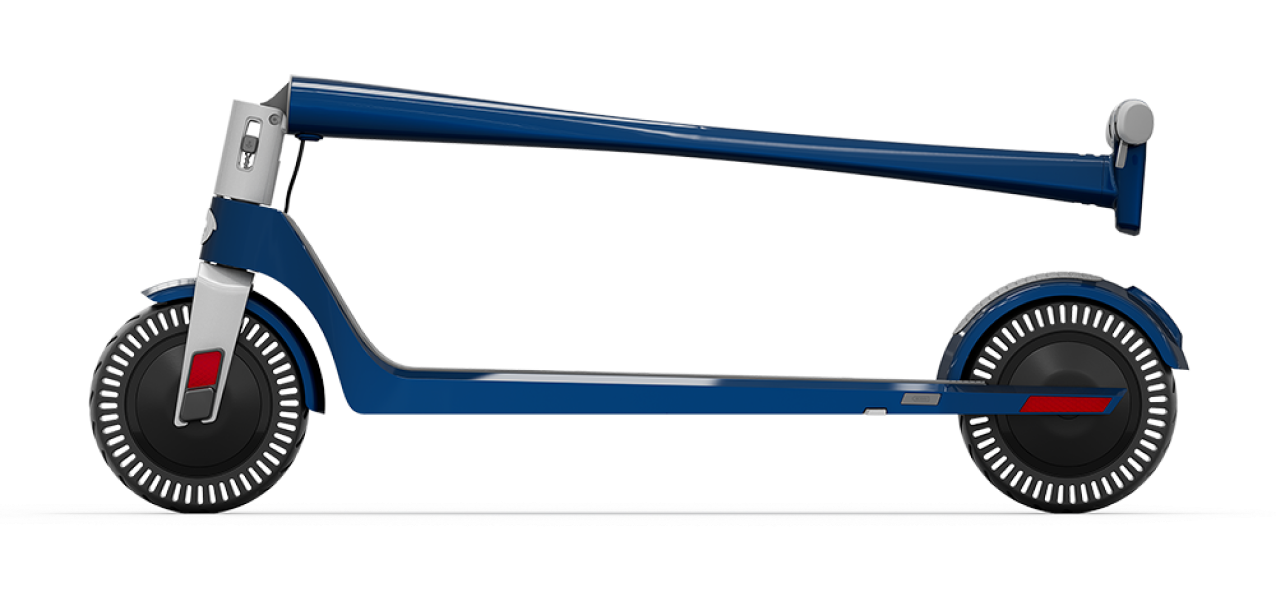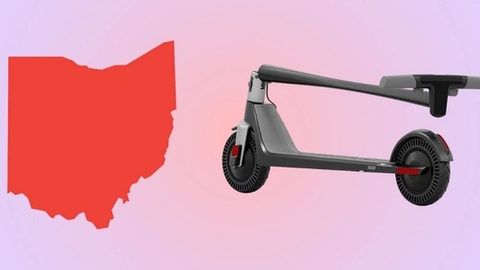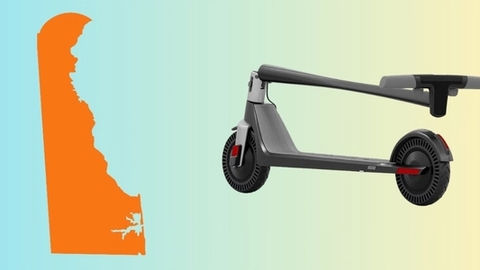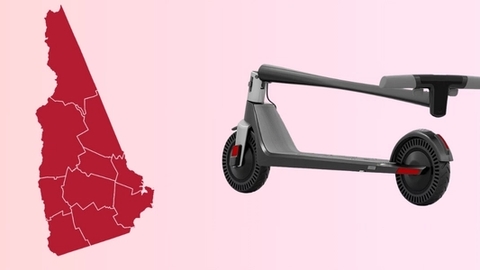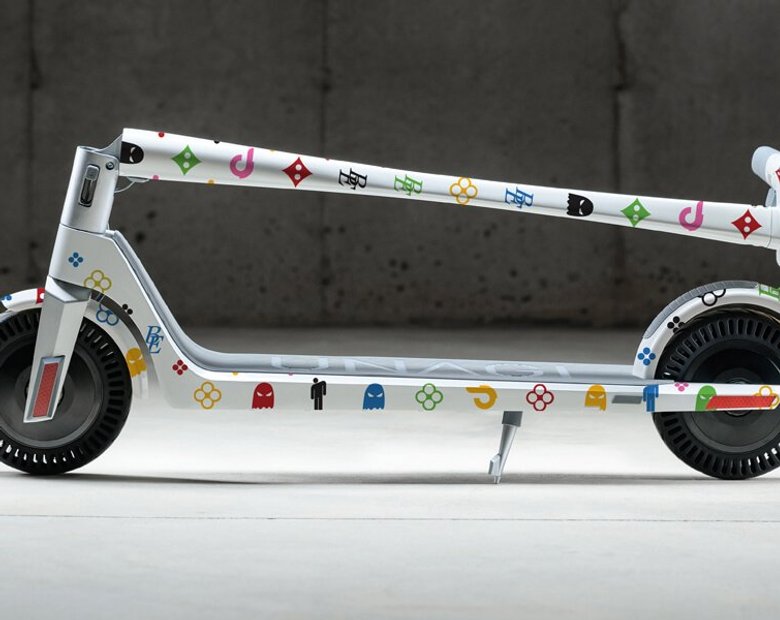Micromobility is here to stay, and it’s changing how we experience urban life for the better. With Unagi’s membership program, you can enjoy all the benefits of a top-tier electric scooter without the sky-high price of ownership or the inconvenience of ride-sharing.
When shopping for a scooter, it’s safe to say that most people wonder, “How fast does it go, and how far can I go?” While the answer can quickly be found on the specs sheet, so much goes into determining an electric scooter's actual top speed and maximum range.
Going straight into it, here are a few factors that will determine your riding speed and range:
- Motor and controller
- Battery capacity and state of charge
- Tires
- Riding surfaces/terrain
- Rider's weight
- Riding style
- Legal speed limit
With that in mind, you have to understand that the indicated top speed and range are usually stated in ideal conditions. Unfortunately, this rarely translates to on-the-ground riding. This is why it’s important to check out reviews by professional riders to get a feel for how the scooter performs out on the road under different real-world conditions.
In this article, we help you understand how the mentioned factors impact your ability to hit top speeds and their impact on your scooter’s range.
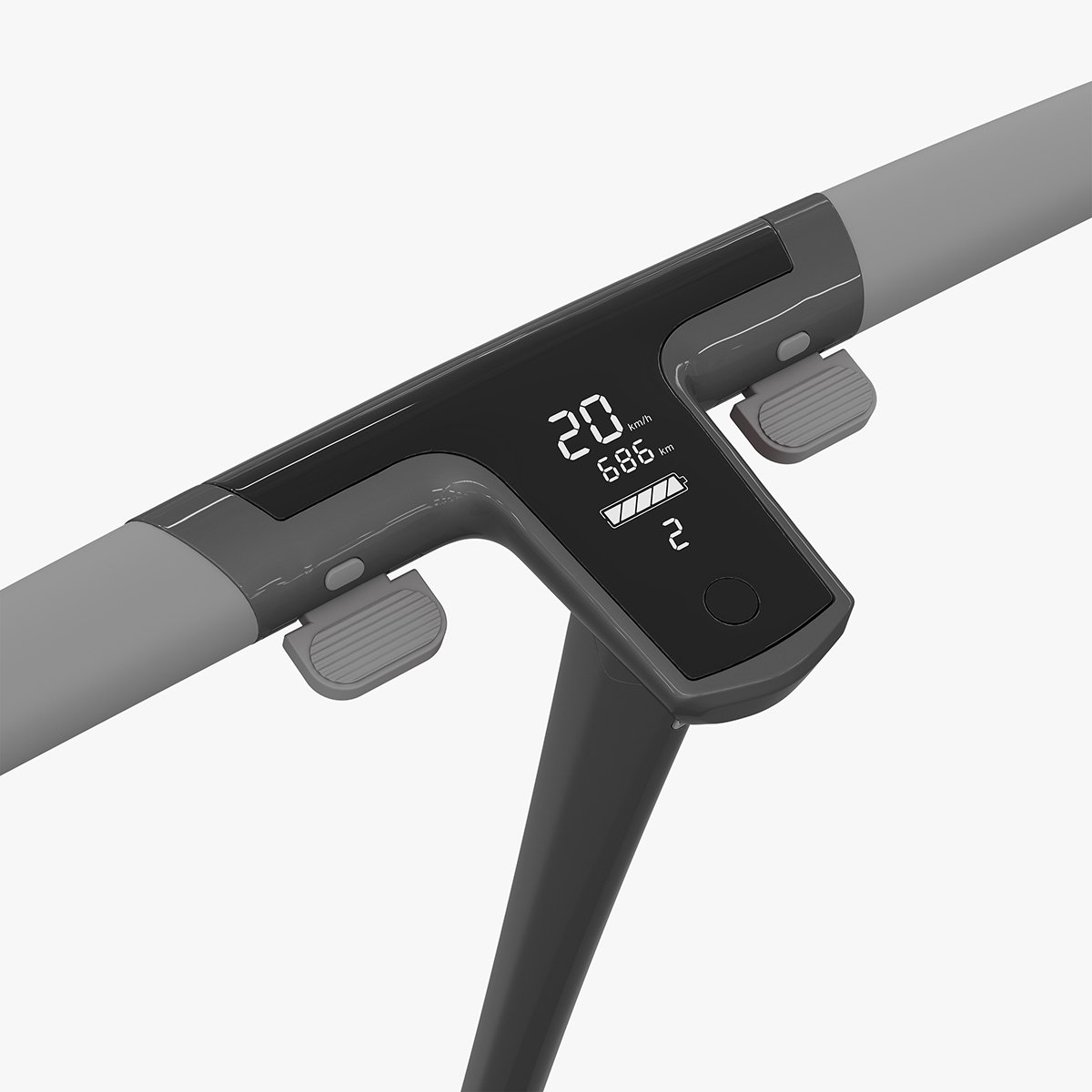
How fast are electric scooters?
Electric scooters can reach speeds ranging from a casual 10 mph to a jaw-dropping 90 mph. However, the average speed for most urban commuting electric scooters is around 15-30 mph (24-48 km/h), with the majority hitting around 20 mph (32 km/h).
At the other end of the spectrum are extreme high-performance scooters that have gained recognition for pushing the boundaries of speed and setting some incredibly high records.
Here are the current speediest scooters in the world:
- Slack Core 920R: 90.1 mph (145 km/h)
- Rion 2RE70 Thrust: 80 mph (128.75 km/h)
- EMOVE Roadster: 72.1 mph (116.06 km/h)
For a more detailed review and comprehensive list of these scooters, check out our article on Which Is The Fastest E-Scooter.
But remember, chasing these speeds has a trade-off: your battery will drain faster, and your range will take a hit. Plus, you might attract some unwanted attention from law enforcement.
This brings us to speed limits and legal considerations when riding electric scooters, which we'll dive into next.
Legal speed limits for riding electric scooters
Different states and their respective jurisdictions have their own set of rules by which riders should abide. This includes regulations surrounding where you can ride your electric scooter, where to park, legal riding age, helmet use, speed limits, etc. We have a comprehensive guide on electric scooter laws in the US – browse through and see the specific guidelines for your state.

That said, most states have a permitted e-scooter top speed of 20 mph on the road. However, many states with higher e-scooter adoption like California and New York tend to have a more conservative 15 mph top speed. Additionally, we have outliers like Michigan with a permissible 25 mph top speed and Missouri at 30 mph.
Something else to note is that local jurisdictions will often have more specific mandates compared to state laws. For instance, a city may have a lower speed limit than that stated by the state.
We’re aware that the topic is highly nuanced, which is why we’re working on local e-scooter guides for different cities to help you understand the laws that govern riding in your area better. Currently, you can browse through our guides for Miami, Houston, Dallas, and California with many more on the way, so be on the lookout.
Understanding the limits of your electric scooter: 6 main factors affecting speed and range
In trying to understand the power potential and limitations of your electric scooter, certain terms will come up quite often:
- Wattage
- Torque
- Nominal and peak power
- Voltage
- Amperes and Watt hours
It may feel like you suddenly need to dust off on your high school physics, but that’s not the case. We’ll explain how these specifications affect performance, as we expound on other correlated factors affecting speed and range.
1. Motor
A high-power motor can deliver faster acceleration and higher top speeds, but it also demands more energy. The controller, on the other hand, is the brain behind the brawn, managing how power flows from the battery to the motor. A top-notch controller ensures that power delivery is smooth and efficient, helping you squeeze out every bit of speed and at the same time extend your battery life.
Electric scooters can have either one or two motors. The most powerful scooters have dual motor configurations, which speaks to the power potential. With most, however, the manufacturers provide a way to turn off power to one motor, if you don’t need as much power. But it’s also been long established that single-motor riding on a dual motor scooter creates undue strain on the motor left on, potentially wearing it out faster.
The Unagi Voyager and Model One Classic are prime examples of affordable, lightweight dual motor electric scooters. Most other scooters in its price and weight class are single motor scooters, making the Unagis one-of-a-kind commuters.
Additionally, we have different kinds of motors, the older, now less common brushed DC hub motors and the improved brushless DC hub motors. If you’re interested in learning the differences, check out our comprehensive guide on electric scooter motors.
Meanwhile, let’s look at power terms used when discussing motors, and how they affect speed and range:
Watts
When rating motors, power is given in Watts (W). This is a unit of measurement that equates joules (energy) per second. If you’re more familiar with horse power, 1 horsepower is equivalent to 745.7 Watts. We have scooters with as small as 100 W motors, all the way to the large 6720 W motors on the Dualtron Storm Limited and the X Limited.
The motor rating indicates the amount of power the motor can produce . For instance, the dual 250 W motors on the lightweight Unagi Voyager indicate that the scooter can produce 500 W of power (2*250W). Subsequently, more wattage means faster acceleration, higher top speeds, and a better ability to sustain heavy loads.
Here’s a peek at the average correlation between Watt-ratings and top speed
| Motor Power Range (Watts) | Typical Speed Range (mph) |
|---|---|
| 250W and Below | Below 18.0 |
| 251W - 500W | 13.0 - 27.0 |
| 501W - 1000W | 19.0 - 35.5 |
| 1001W - 2000W | 30.3 - 44.0 |
| 2001W - 3000W | 38.4 - 50.0 |
| 3001W and above | 41.0 - 90.1 |
Nominal and peak power
Nominal power refers to the continuous power output that the motor can handle without overheating or experiencing any long-term damage. This is the everyday power level your scooter motor can maintain during normal usage. Think of it as the motor's comfort zone – the power it can sustain over extended periods without breaking a sweat.
For example, the lightweight Unagi Model One Voyager is a dual motor scooter, with each motor rated at 250 W, bringing the scooter’s total nominal power to 500 W. This means that the motors combined run at a total of 500 W during normal operation.
The nominal voltage is what we use to compare one scooter to the other, e.g., the Turboant X7 Max is a 350 W scooter, while the Segway Ninebot Max G2 is a 450 W scooter.
Think of nominal power as your steady jog and peak power as your all-out sprint.
Peak power, on the other hand, is the maximum power the motor can deliver in short bursts. This is the motor's "boost" mode – the extra power it can tap into when you need a quick acceleration, climb a steep hill, or overcome a challenging terrain. Peak power is typically much higher than nominal power, but it's only sustainable for short periods to avoid overheating.
Think of nominal power as your steady jog and peak power as your all-out sprint.
Peak power, on the other hand, is the maximum power the motor can deliver in short bursts. This is the motor's "boost" mode – the extra power it can tap into when you need a quick acceleration, climb a steep hill, or overcome a challenging terrain. Peak power is typically much higher than nominal power, but it's only sustainable for short periods to avoid overheating.
For instance, the lightweight Unagi Voyager has a nominal power of 500W but a peak power of 1000 W. This means it can temporarily double its power output to help you tackle those steep inclines or accelerate swiftly from a standstill.
The higher the number, the more powerful a scooter is.
Torque
Torque is the rotational force generated by the motor and is influenced by the motor's power (in watts) and the rotational speed (in revolutions per second or per minute).It is measured in Newton-meters (Nm) or pound-foot (lb-ft), depending on your system
Generally, higher-rated motors tend to produce more torque, which helps in climbing hills and accelerating faster.The only exception is bigger-wheeled scooters like the Gotrax Flex or EMOVE Roadrunner, which have fewer turns per second on account of their larger diameter, resulting in the slower hill climbs demonstrated by the scooters.
Battery capacity and range
An electric scooter's 'range' basically depends on its rechargeable battery.
But how far your e-scooter will travel on a single charge will also rely on other key factors such as battery type and cells, tires, total weight carried, your riding style, and riding conditions.
Most electric scooters today will carry a lithium-ion battery, which has a longer lifespan, and requires minimal maintenance. It's generally recommended to look out for electric scooters loaded with high-quality, lithium-ion batteries produced by major brands such as LG or Samsung.
Battery life
Premium, top brand batteries usually contain 217000 cells , which can produce a consistently high-powered performance of up to 500 charge cycles over a 3 - 5 year lifespan.
21700 batteries contain cells measuring 21 mm (width) x 70 mm (length). Which have a greater charge-holding capacity than 18650 batteries measuring 18mm (width) x 65mm (length).
Voltage
Voltage is a measure of the force or intensity of an electric current when it flows through a circuit, similar to how water pressure describes how forcefully water flows through a pipe. A scooter’s voltage rating indicates the maximum voltage the battery can provide. Higher voltage ratings mean that more charge can be delivered to the motors, resulting in better performance. Higher voltages also ensure that the scooter does not significantly slow down as the battery depletes.
The Emove Roadster, the Dualtron Storm Limited, and the Dualtron X Limited have some of the highest voltage ratings among production scooters, at 84 V, while most commuter scooters are rated at 36 V.
Note: Voltage is a more accurate measure of the amount of energy stored in the battery, which is why heavy-duty scooters like the Kaabo Wolf Kings and the Dualtron beasts are equipped with voltmeters. When fully charged, the voltmeter usually displays the scooter’s maximum voltage (and sometimes marginally higher).
Amp hours (ah)
Batteries are rated in amp hours (Ah), which represent the amount of electrical charge (measured in number of amps) that can be supplied within one hour. The higher the number of amp-hours, the greater the amount of energy stored, ultimately resulting in longer mileage and better range.
Watt hours (Wh)
Battery capacity is rated in watt hours (Wh), which measures the electrical energy equivalent to one watt of power used over one hour. As with amp hours, more watt hours means more energy stored, leading to a longer range.
To calculate watt-hours (Wh): Battery voltage x Amp-hours.
Example:
The Lightweight Unagi Model One (E500) comes with a 33.6 volt battery and 9.0 Amp hours.
- (Battery voltage) 33.6 x (Amp hours) 9.0 = 302.4 watt hours (Wh), which means a single charge can deliver a range of up to 19.31 kms (12 miles).
The lightweight Unagi Voyager, on the other hand, has a 36 V battery rated 10 Ah
- (Battery voltage) 36 x (Amp hours) 10 = 360 watt hours (Wh), which means a single charge can deliver a range of up to 40.23 kms (25 miles).
Many riders usually refer to the efficiency of a scooter's battery performance by the number of watt-hours (Wh).
3. Type of tires
Your scooter's speed and range will be affected by the type and size of tires you're riding on. An electric scooter's tire size is also directly related to the size of its motor. This is literally because the motors are mounted within the scooter’s wheel hubs.

This means larger tires will be fitted to an e scooter carrying a more powerful motor, designed for high performance rides, typically 25.5 - 28 cm (10 - 11 in) in diameter. And a width of 8.25 cm (3.25) - 8.75 cm (3.5 in).
A more low cost electric scooter may only be fitted with 21.5 cm (8.5 in) diameter tires, and a 5 cm (2 in) width.
Larger diameter tires provide better stability and cover more ground per revolution, potentially increasing and making it easy to maintain top speed. They also handle rough terrain better, maintaining speed on uneven surfaces. However, it is slightly harder to accelerate on them due to their higher rotational inertia.
Smaller tires may offer better acceleration due to their lower rotational inertia but can struggle with maintaining high speed.
Tire Tread
Smooth Tread: Designed for city and paved roads, smooth tread tires reduce rolling resistance, enabling higher speeds on flat, smooth surfaces.
Knobby Tread: Suitable for off-road and rough terrain, knobby tread tires provide better traction but increase rolling resistance and affect handling , which can slightly reduce speed on smooth surfaces.
Tire profiles
- Rounded tires (great for leaning into a turn)- can often be fitted to extra speedy e scooters. Their large surface area has more contact with a riding surface for maintaining traction.
- Square front-on profiles (ideal for riding in a straight line/ cruise control mode). A square profile will also make a wide surface contact, and is recommended for responsive acceleration and braking.
Tire pressure
Tires inflated to the correct pressure will achieve the best performance, including speed, traction, maneuverability, and wear.
Every electric scooter tire will have a recommended PSI (pounds per square inch) - between 40 - 60 PSI. It's important to regularly check both tires are inflated at the recommended pressure.
- Under-inflated tires - will dampen your speed. This is because of increased rolling resistance or friction during contact with a riding surface. Your electric scooter will feel heavier and less able to smoothly steer or carry a rider's weight. Other negative effects include reduced braking ability, overheating, and sidewall bulging.
- Over-inflated tires - will also affect your speed. A reduced area of tire profile is in contact with the riding surface, causing a loss of traction. You will also experience poorer suspension, and a reduced ability to cushion against a bumpy riding surface, such as uneven pavements or potholes. This often means your electric scooter is harder to steer, and actually slows down as you try to move forward fast.
4. Riding surfaces / terrain
Your speed will always be affected by different road or ground surfaces. A flat, obstacle-free sidewalk can instinctively make you want to open up the throttle, and go for maximum speed. Remember - you need to stay within the permitted limit, and keep a watchful eye out for pedestrians and pedal cyclists.
Many parks and recreation areas will also have well-maintained tracks and walkways. Where you're more likely to have a pedestrian-free, safe space for hitting top speed. Or perhaps trying out a few wheelies.
You will definitely need to vary your speed when dealing with curbs or simply coming across an uneven or cracked road surface.
P-settings and top speed modes
Electric scooters often come with different riding modes that affect their speed and battery efficiency. You can set the modes based on what you want most at the moment, performance or range. Here are two common modes:
- Eco Mode: Riding in eco mode limits the top speed and acceleration to conserve battery life, suitable for longer rides or when the battery is low.
- Sport Mode: Sport mode unleashes the scooter's full power, providing faster acceleration and higher top speeds but at the cost of reduced range.
High-performance electric scooters offer pre-programmed settings (p-settings) as part of cockpit control. P-settings allow you to customize your ride to your desired state–you can tame a beast scooter to comfortably handle on your regular commutes if you know what you’re doing. Most p-settings allow riders to regulate acceleration, set custom top speed limit caps, and even adjust the strength of your braking to match the top speed.
Regular commuter scooters, on the other hand, have control over top speed via dedicated speed modes that are accessible on the dash, or via the scooter’s app.
For example...
The lightweight Unagi Voyager has 3 onboard settings - or modes:
- MODE 1. 14 km/h (9 mph) Eco mode equivalent: Ideal top speed for learner riders, and a speed that may be more suited to steering on some types of surfaces.
- MODE 2. 19 km/h (12 mph): Typical top speed for the urban, daily commute. Or those longer distance rides where a "balanced" throttle (or cruise control) can be engaged.
- MODE 32.2 km/h (20 mph) Sport mode equivalent: A top speed setting - also called the "sports mode" on other electric scooters.
Hill climbs
Tackling hill climbs or steep gradients will always demand more speed from your electric scooter, whatever the model. How well your electric scooter is able to handle slopes and steeper climbs depends on 4 key factors:
- Motor power
- Battery charge
- Total scooter and carrying weight
- Tires and suspension
Apart from budget e scooters, most electric scooters can handle slight inclines of 15 to 20 degrees. But some may struggle with gradients rising above 25 degrees.
The most powerful, high speed scooters like the NAMI scooters, the Kaabo Wolf Kings and high-end Dualtrons should easily zip up the steepest slopes of 30 degrees or more.
5. Rider's weight
An electric scooter's weight capacity/ weight limit are also key factors which influence how fast you can ride. Riders should ensure a proper match for their own weight (with an allowance for luggage carry-ons like grocery bags or backpacks) to the stated capacity of the scooter.
The weight limit of an electric scooter is important as it communicates the operational efficiency under specified weights. Overloading a scooter could cause a loss of acceleration and top speed due to the added strain on the motor, reduced range due the extra power required by the motor to move the heavier load, and hill climb failure as is the case with any overloaded vehicle.
The weight carrying limit of most e scooters is usually between 100 kg (220 lb) and 120 kg (265 lb). If you’re a heavier rider, consider a more heavy duty scooter with a weight limit of 140 kg (300 lb) and above.
Additionally, heavy riders should consider the following to ensure maximum efficiency:
- Suspension - front and rear, for added cushion against uneven surfaces.
- Strong Frame - and robust folding mechanism to avoid potential frame fractures.
- Motor - a higher rated motor accelerates, and provides a more comfortable ride at speed.
- Battery - high capacity for comfortable weight carrying and longer range.
- Brakes - more responsive for longer stopping distance needed during high speed rides.
6. Riding style
Your riding style can significantly influence the speed and overall performance of your electric scooter. Here are some key factors to consider:
- Smooth acceleration and consistent speed: Gradually increasing your speed instead of mashing the throttle will help maintain battery efficiency and give you a smoother ride. Sudden bursts of speed can drain the battery quickly and reduce the scooter's overall range.
- Assume an aerodynamic riding Position: Leaning forward and minimizing your body's wind resistance to help increase and maintain higher speeds. Standing upright or adopting a wide stanceis like putting a parachute on your back – more drag, less speed
- Smooth Cornering: Sharp turns not only disrupt your speed but also mess with your stability.
Additional tips
It's recommended to only rotate your handlebars when riding at low speed - around 8 km/h (5 mph) to 16 km/h (10 mph).
Rotating your handlebars at high speed will reduce your speed when making a turn. It could also cause your scooter to jack-knife.
The smoothest, most efficient way to make a turn when riding at speeds above 16 km/h (10 mph) is to lean into the turn without rotating the handlebar.
Brake Usage: Minimizing the use of brakes by anticipating stops and coasting when possible can help maintain a higher average speed
Just getting started? Check out our tips and tricks for beginner riders.
Conclusion
Understanding the top speed and range of electric scooters involves more than just glancing at the specs sheet. While manufacturers provide ideal conditions for these figures, real-world factors such as motor power, battery capacity, terrain, weather conditions, and rider weight significantly influence actual performance. Therefore, always consult reviews and guides to understand how a scooter performs under various conditions, ensuring that your choice meets your specific needs and lifestyle.

Stay current with the latest U.S. electric scooter laws in our 2025 guide. Updated annually since our first comprehensive guide, ensuring you have the most recent state and city regulations to ride responsibly”
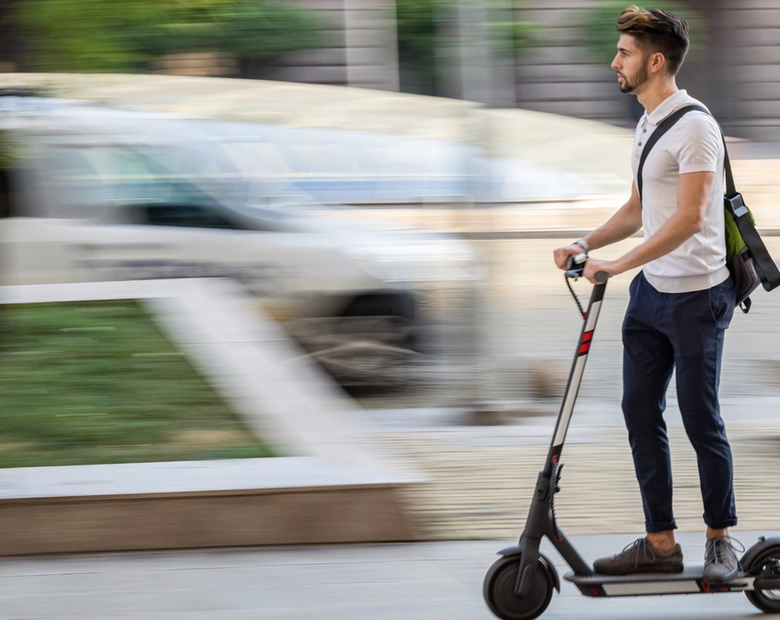
The Slack Core 920R is currently the fastest electric scooter in 2025 that you can purchase without the need for pre-order.
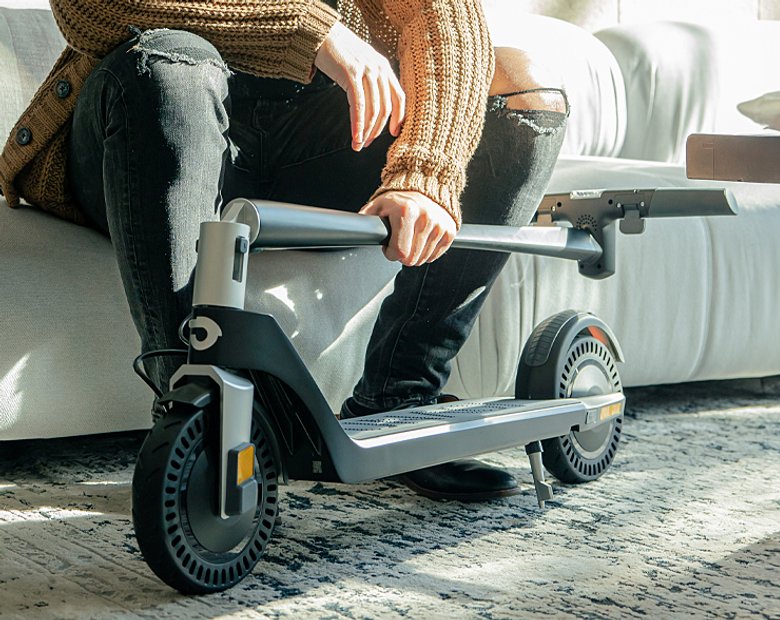
Our selection of the best electric scooters 2025 spans the fastest e-scooters to the most portable ones, the ones designed for city riding and off-road, the best scooters for rain, budget electric scooters for students, and more powerful ones for skilled riders.
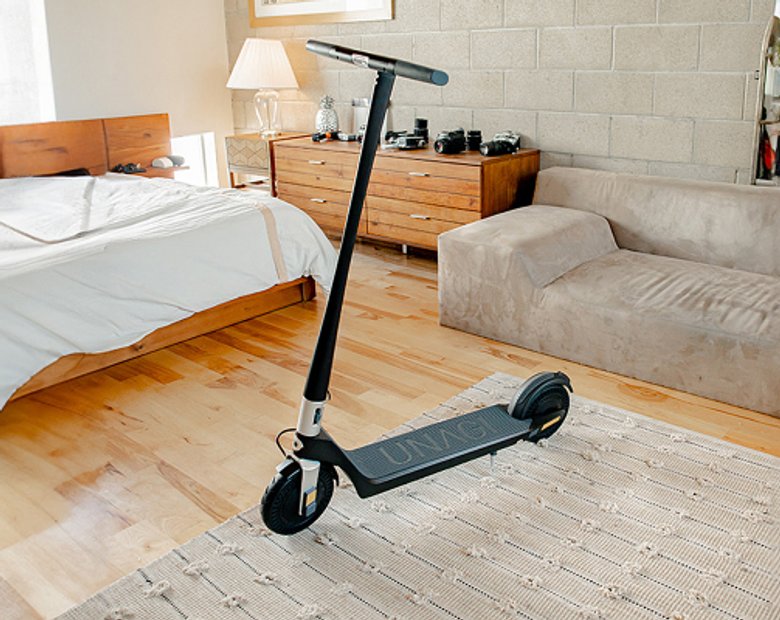
The Unagi Voyager is the best lightweight electric scooter for adults and teenagers. It is the ultraportable sequel to its predecessor, the Unagi Model One Classic.

If you're wondering whether an electric scooter with a seat is right for you, this is a detailed article that would suit your need.
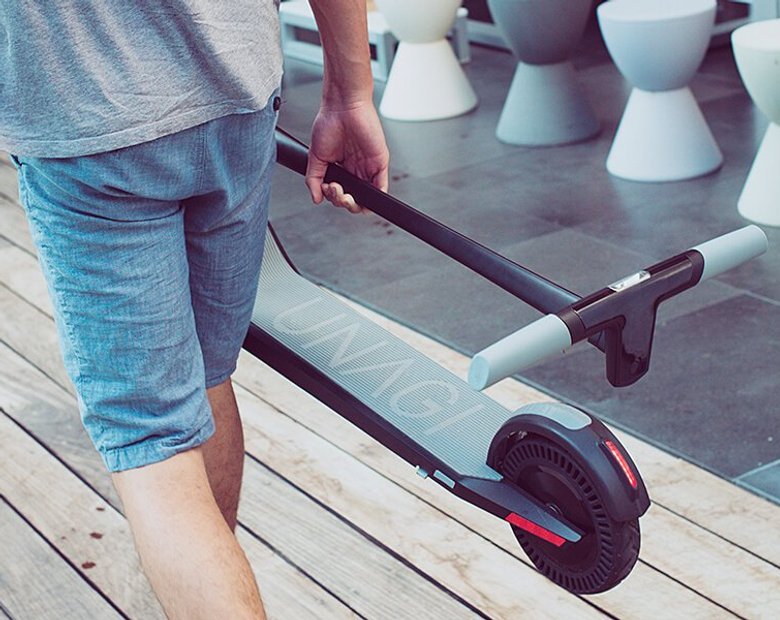
Understand which personal electric vehicle is best, the choice between an electric bike or electric scooter might already be made for you by some critical factors, including portability and storage capacity.
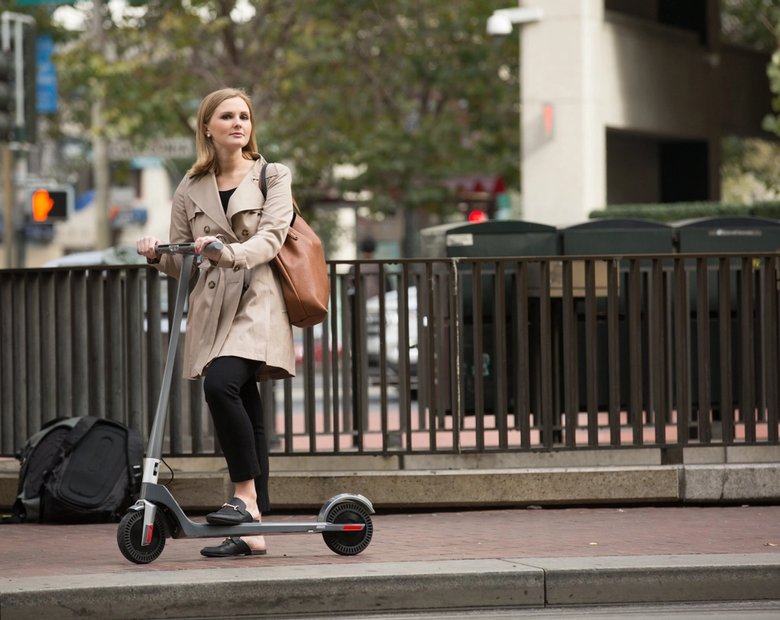
In the U.S., most states don't require a license. For those that do, they usually just ask for a regular driver's license or a learner's permit.
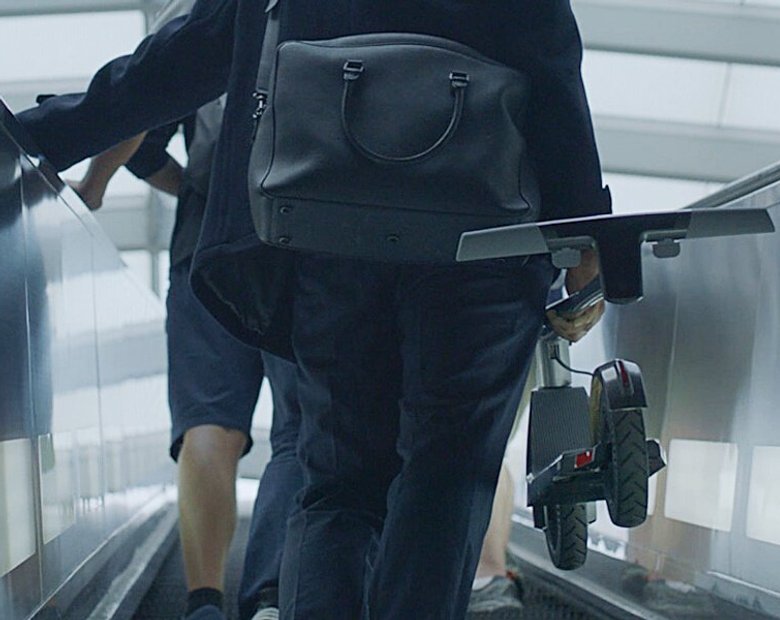
Yes, you can bring an electric scooter on a plane, but it needs to have a lithium battery smaller than 100 watt-hours, which most don't.

Manufacturers advise against riding electric scooters in the rain. The main reasons are: water can fry the electronics, make the ride dangerous, and void your warranty.

The basis and the premise of my work is that we either operate out of love or we operate out of fear...Time is currency. The coolest thing about the scooters is that it's really quick, and it goes uphill. From there, traveling more efficiently and having a good time doing it--I think that's the most important thing.

Cynthia Leu has a full plate. A tech worker by day, Cynthia spends her off time balancing the parallel lives of a powerlifter, entrepreneur, mental health advocate, and more. Riding Unagi helps this USMC veteran cut down on everyday…

https://www.youtube.com/watch?v=7m2hVBE62LY Rasheed Muhammad is sick of Los Angeles traffic. In order to preserve his sanity, Rasheed has traded his everyday driving habit for the portable and beautiful Unagi Model One. It’s an essential accessory for navigating LA streets -- and…

Rich Lee, Co-Founder of San Francisco’s SPRO Coffee Lab, wants to share his love for coffee with the world. He depends on riding Unagi to avoid the hassle of navigating the parking crunch in the booming Mission Bay neighborhood.…


